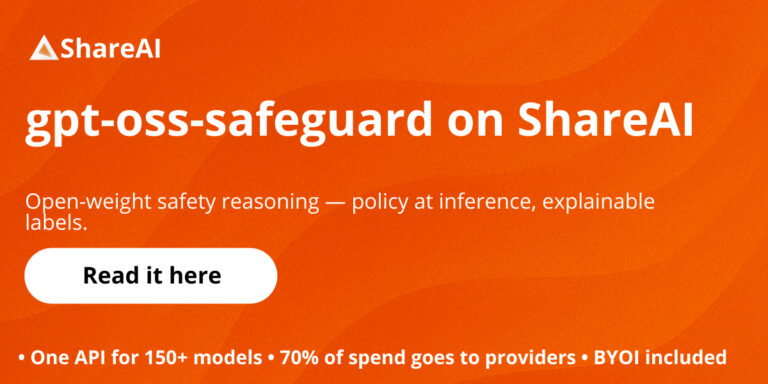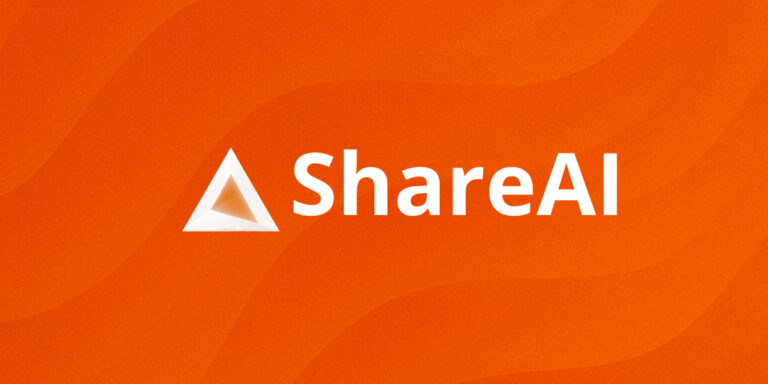Maxim Bifrost Alternatives 2025: Top 10 Maxim Bifrost Alternatives

Updated November 2025
If you’re evaluating Maxim Bifrost alternatives, this guide compares the best options like a builder would: clear categories, practical trade-offs, and copy-paste quickstarts. We place ShareAI first when you want one API across many providers, a transparent model marketplace (price, latency, uptime, availability, provider type) before you route, instant failover, and people-powered economics (70% of spend goes to providers). If you’re also searching for Portkey alternatives, the same criteria apply—see the notes below for how to compare gateways to marketplace-style aggregators.
What Maxim Bifrost is (at a glance): Bifrost is a high-performance LLM gateway that exposes an OpenAI-compatible API, supports multiple providers, adds fallbacks and observability, and emphasizes throughput and “drop-in” replacement for existing SDKs. Their docs and site highlight performance claims, native tracing/metrics, clustering/VPC options, and migration guides.

Aggregators vs Gateways vs Agent platforms
LLM aggregators (e.g., ShareAI, OpenRouter) provide one API across many models/providers with pre-route transparency (see price/latency/uptime/availability first) and smart routing/failover so you can switch providers without rewrites.
AI gateways (e.g., Maxim Bifrost, Portkey, Kong) focus on egress governance, credentials/policies, guardrails, and observability. They may include fallbacks and catalogs but typically do not offer a live marketplace view of price/latency/uptime/availability before routing.
Agent/chatbot platforms (e.g., Orq, Unify) emphasize orchestration, memory/tools, evaluation, and collaboration flows rather than provider-agnostic aggregation.
How we evaluated the best Maxim Bifrost alternatives
- Model breadth & neutrality: proprietary + open; easy switching; no rewrites.
- Latency & resilience: routing policies, timeouts, retries, instant failover.
- Governance & security: key handling, scopes, regional routing, RBAC.
- Observability: logs/traces and cost/latency dashboards.
- Pricing transparency & TCO: compare real costs before you route.
- Developer experience: docs, SDKs, quickstarts; time-to-first-token.
- Community & economics: whether your spend grows supply (incentives for GPU owners).
Top 10 Maxim Bifrost alternatives
#1 — ShareAI (People-Powered AI API)
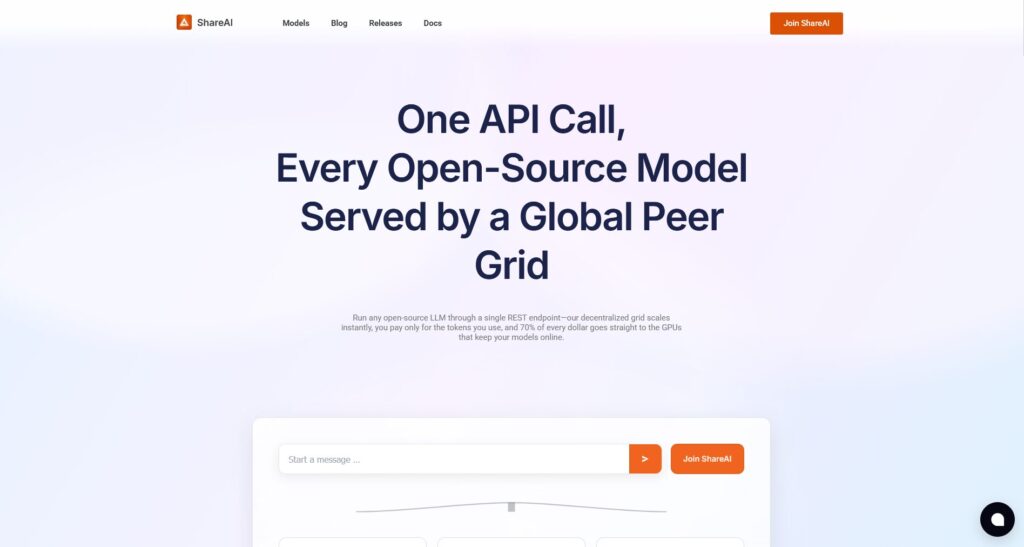
What it is. A multi-provider API with a transparent marketplace and smart routing. With one integration, browse a large catalog of models/providers, compare price, latency, uptime, availability, provider type, and route with instant failover. Economics are people-powered: 70% of every dollar flows to providers (community or company) who keep models online.
Why it’s #1 here. If you want provider-agnostic aggregation with pre-route transparency and resilience, ShareAI is the most direct fit. Keep a gateway if you need org-wide policies; add ShareAI for marketplace-guided routing.
Quick links: Browse Models · Open Playground · Create API Key · API Reference · Docs Home · Releases
#2 — Portkey
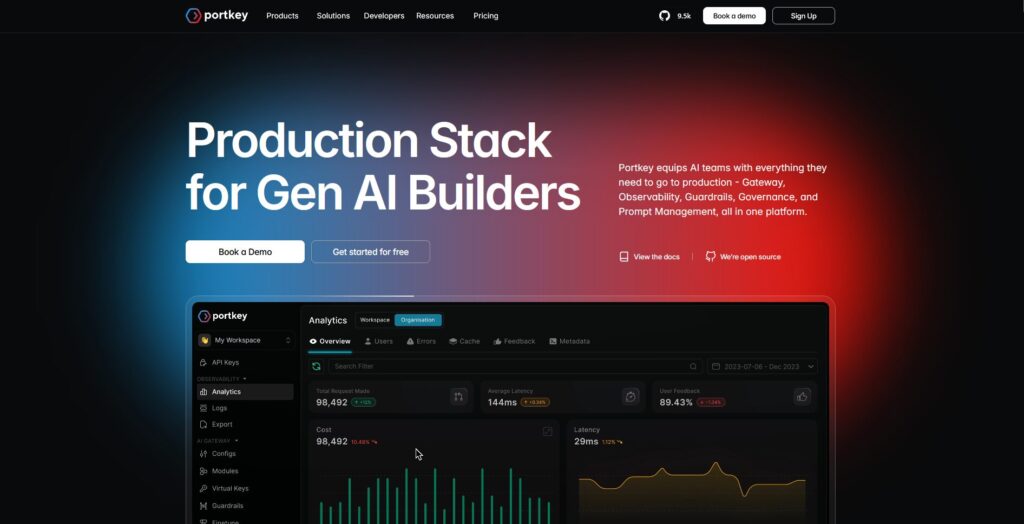
What it is. An AI gateway emphasizing observability, guardrails, and governance—popular in regulated teams. If your priority is policy controls and deep traces, Portkey fits the gateway lane. Pair with ShareAI for marketplace-guided routing.
#3 — OpenRouter
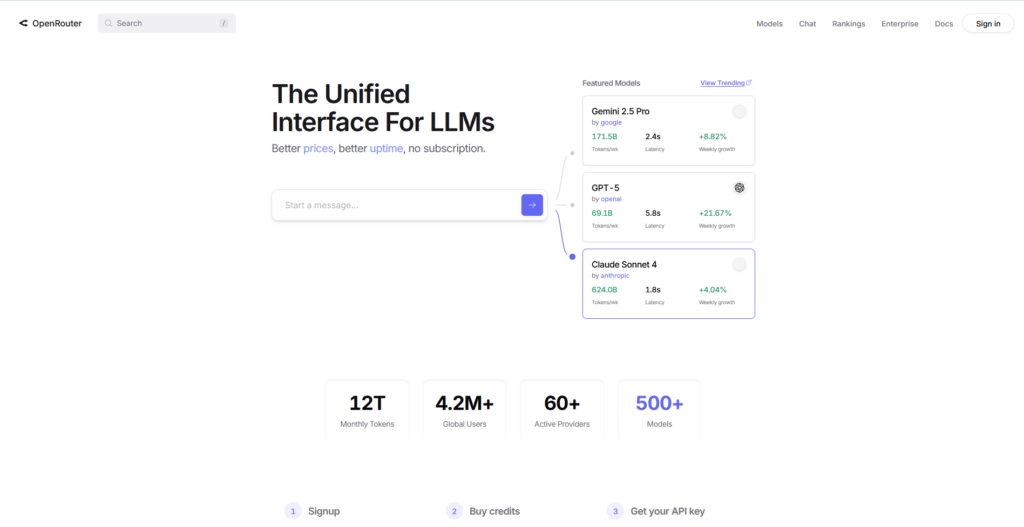
What it is. A unified API over many models—handy for quick multi-model experiments and broad catalog coverage. Add ShareAI when you want live transparency (price/latency/uptime/availability) and instant failover across providers.
#4 — Traefik AI Gateway
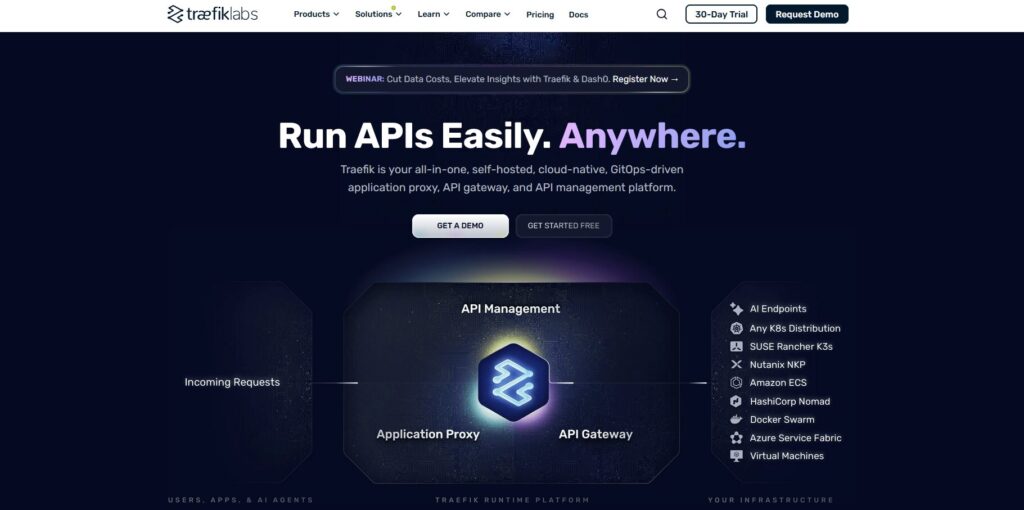
What it is. Gateway-style egress governance (credentials/policies) with OpenTelemetry-friendly observability; a thin LLM layer on top of Traefik Hub—more “control plane” than marketplace. Pair with ShareAI for provider-agnostic routing.
#5 — Eden AI
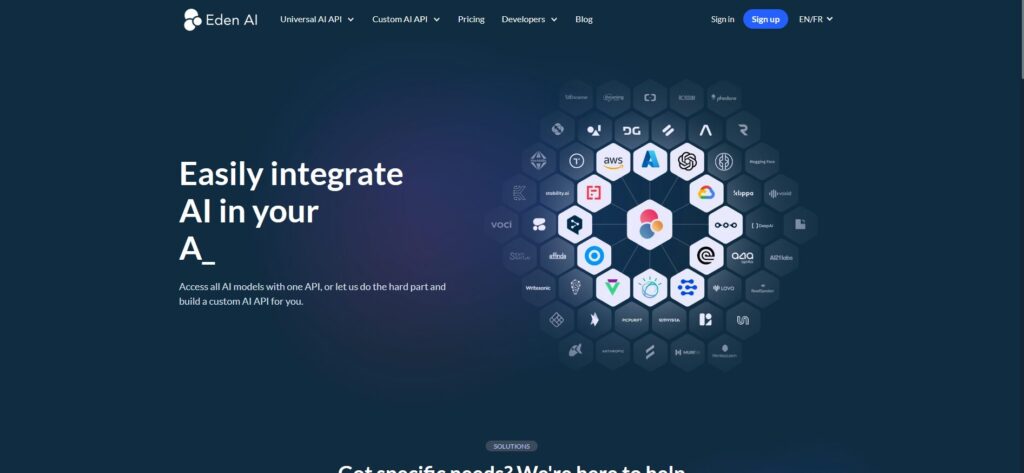
What it is. A broad AI services aggregator (LLM + vision + TTS). Add ShareAI when you need marketplace transparency and resilient multi-provider routing for LLMs.
#6 — LiteLLM
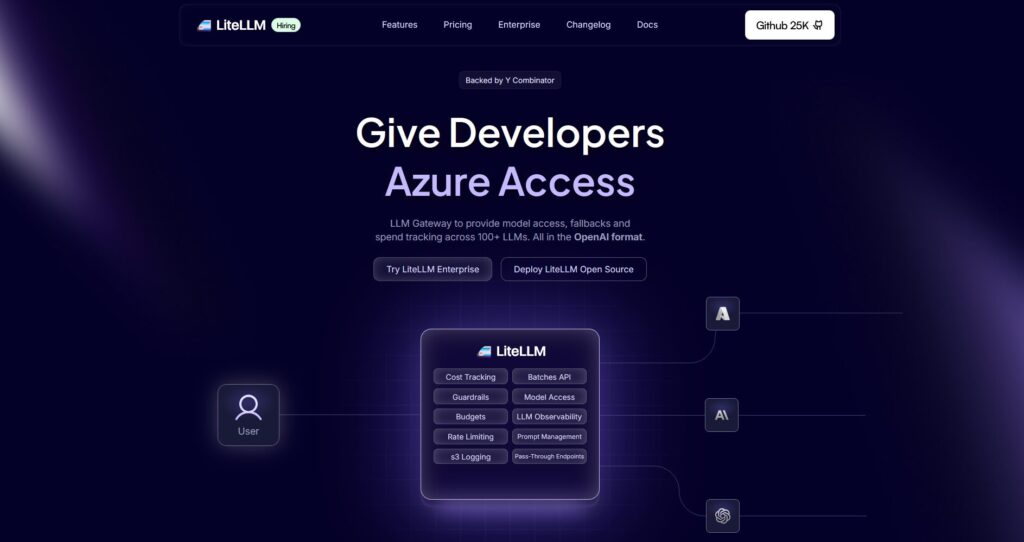
What it is. A lightweight Python SDK/self-hostable proxy that speaks OpenAI-compatible to many providers—good for DIY. Use ShareAI to reduce ops overhead and gain marketplace-driven provider choice + failover.
#7 — Unify

What it is. Evaluation-driven routing to pick higher-quality models per prompt. If you want pre-route transparency and instant failover across providers, ShareAI complements this well.
#8 — Orq AI

What it is. Orchestration/collaboration platform—flows and productionization rather than marketplace routing. Use ShareAI for provider-agnostic access and resilience.
#9 — Apigee (front AI with it)
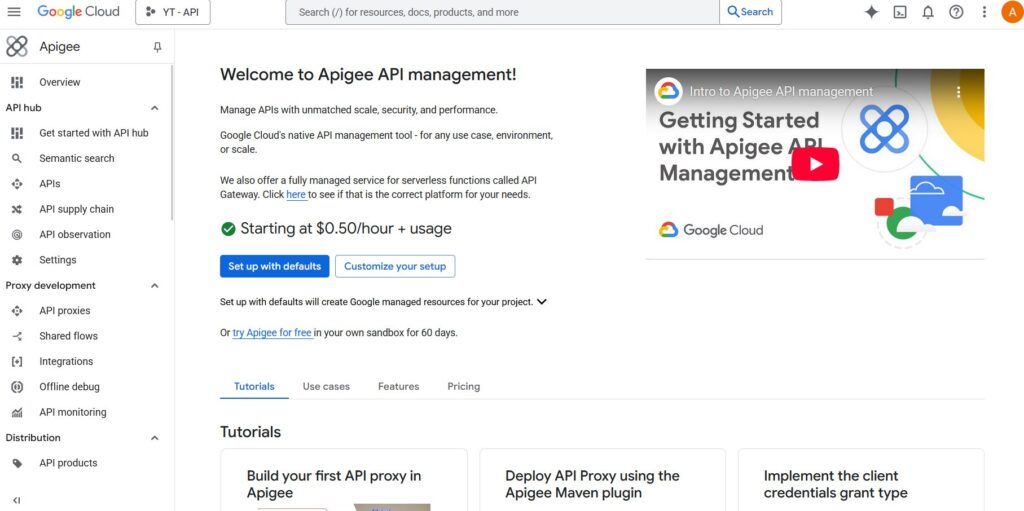
What it is. Mature API management/gateway you can place in front of LLM providers to apply policies, keys, quotas. ShareAI adds transparent multi-provider routing when you want to avoid lock-in.
#10 — NGINX

What it is. DIY reverse proxy—token enforcement, simple routing/caching if you like to roll your own. Pair with ShareAI to skip custom Lua and still get marketplace-guided provider selection + failover.
Maxim Bifrost vs ShareAI
Choose ShareAI if you want one API over many providers with transparent pricing/latency/uptime/availability and instant failover. Choose Bifrost if your top requirement is egress governance + high throughput with features like native tracing/metrics, clustering, and VPC deploys. Many teams pair a gateway with ShareAI: gateway for org policy; ShareAI for marketplace-guided routing.
Quick comparison
| Platform | Who it serves | Model breadth | Governance & security | Observability | Routing / failover | Marketplace transparency | Provider program |
|---|---|---|---|---|---|---|---|
| ShareAI | Product/platform teams needing one API + fair economics | 150+ models; many providers | API keys & per-route controls | Console usage + marketplace stats | Smart routing + instant failover | Yes (price, latency, uptime, availability, provider type) | Yes — open supply; 70% to providers |
| Maxim Bifrost | Teams wanting a high-performance gateway | “1000+ models” via unified API | RBAC, budgets, governance, VPC | Tracing/metrics, dashboards | Fallbacks & clustering | No (gateway, not a marketplace) | n/a |
On Bifrost’s positioning: “LLM gateway… connects 1000+ models… drop-in style, observability, and migration.” On performance/benchmarks and tracing, see their product/docs/blog.
Pricing & TCO: compare real costs (not just unit prices)
Raw $/1K tokens hides the real picture. Your TCO shifts with retries/fallbacks, latency (impacts usage/UX), provider variance, observability storage, and evaluation runs. A transparent marketplace helps you choose routes that balance cost and UX.
TCO ≈ Σ (Base_tokens × Unit_price × (1 + Retry_rate))
+ Observability_storage
+ Evaluation_tokens
+ EgressPrototype (~10k tokens/day): Optimize for time-to-first-token (Playground, quickstarts). Mid-scale (~2M tokens/day): Marketplace-guided routing/failover can trim 10–20% while improving UX. Spiky workloads: Expect higher effective token costs from retries during failover; budget for it.
Developer quickstart (OpenAI-compatible)
Replace YOUR_KEY with your ShareAI key—get one at Create API Key. Then try these:
#!/usr/bin/env bash
# cURL — Chat Completions
# Prereqs:
# export SHAREAI_API_KEY="YOUR_KEY"
curl -X POST "https://api.shareai.now/v1/chat/completions" \
-H "Authorization: Bearer $SHAREAI_API_KEY" \
-H "Content-Type: application/json" \
-d '{
"model": "llama-3.1-70b",
"messages": [
{ "role": "user", "content": "Give me a short haiku about reliable routing." }
],
"temperature": 0.4,
"max_tokens": 128
}'// JavaScript (fetch) — Node 18+/Edge runtimes
// Prereqs:
// process.env.SHAREAI_API_KEY = "YOUR_KEY"
async function main() {
const res = await fetch("https://api.shareai.now/v1/chat/completions", {
method: "POST",
headers: {
"Authorization": `Bearer ${process.env.SHAREAI_API_KEY}`,
"Content-Type": "application/json"
},
body: JSON.stringify({
model: "llama-3.1-70b",
messages: [
{ role: "user", content: "Give me a short haiku about reliable routing." }
],
temperature: 0.4,
max_tokens: 128
})
});
if (!res.ok) {
console.error("Request failed:", res.status, await res.text());
return;
}
const data = await res.json();
console.log(JSON.stringify(data, null, 2));
}
main().catch(console.error);# Python (requests)
import os, requests, json
api_key = os.getenv("SHAREAI_API_KEY")
url = "https://api.shareai.now/v1/chat/completions"
payload = {
"model": "llama-3.1-70b",
"messages": [{"role": "user", "content": "Give me a short haiku about reliable routing."}],
"temperature": 0.4,
"max_tokens": 128
}
resp = requests.post(
url,
headers={
"Authorization": f"Bearer {api_key}",
"Content-Type": "application/json"
},
json=payload
)
print(resp.status_code)
print(resp.json())More docs: API Reference · Docs Home · Open Playground
For providers: earn by keeping models online
Anyone can become a ShareAI provider—Community or Company. Onboard via Windows, Ubuntu, macOS, or Docker. Contribute idle-time bursts or run always-on. Choose your incentive: Rewards (money), Exchange (tokens/AI Prosumer), or Mission (donate a % to NGOs). As you scale, set inference prices and gain preferential exposure.
Provider links: Provider Guide · Provider Dashboard · Exchange Overview · Mission Contribution
FAQ — Maxim Bifrost vs other competitors (and where ShareAI fits)
Maxim Bifrost vs OpenRouter — which for multi-model speed?
OpenRouter is quick for experimenting across many models. Bifrost is a gateway built for throughput with drop-in replacement and governance. If you also want pre-route transparency and instant failover across providers, choose ShareAI.
Maxim Bifrost vs Traefik AI Gateway — which gateway?
Both are gateways: Traefik leans edge policies/observability; Bifrost emphasizes high-throughput LLM routing. If you want marketplace transparency + one API over many providers, add ShareAI.
Maxim Bifrost vs Portkey — who’s stronger on guardrails?
Both emphasize governance and observability. If your main need is transparent provider choice and instant failover across providers, ShareAI is purpose-built for that.
Maxim Bifrost vs Eden AI — many AI services or gateway control?
Eden AI aggregates multiple AI services (LLM, TTS, vision). Bifrost centralizes egress for LLMs. For marketplace-guided routing with price/latency/uptime visibility before you route, pick ShareAI.
Maxim Bifrost vs LiteLLM— DIY proxy or packaged gateway?
LiteLLM is a DIY proxy/SDK. Bifrost is a packaged gateway. If you’d rather not operate infra and want marketplace data + resilient routing, use ShareAI. (Bifrost often cites benchmarks vs LiteLLM; see their repo/blog.)
Maxim Bifrost vs Unify — best-model selection vs policy enforcement?
Unify optimizes selection quality; Bifrost enforces policy/routing. To combine multi-provider access, pre-route transparency, and failover, choose ShareAI.
Maxim Bifrost vs Orq AI — orchestration vs egress?
Orq helps orchestrate flows; Bifrost governs egress. ShareAI complements either with a marketplace view and resilient routing.
Maxim Bifrost vs Kong AI Gateway — enterprise gateway vs dev-speed gateway?
Both are gateways. If you also need transparent marketplace comparisons and instant failover across providers, layer ShareAI.
Maxim Bifrost vs Apigee — API management vs AI-specific gateway?
Apigee is broad API management; Bifrost is AI-focused. For provider-agnostic access with a live marketplace, ShareAI is the better fit.
Maxim Bifrost vs NGINX — DIY vs turnkey?
NGINX offers DIY controls; Bifrost is turnkey. To avoid custom Lua and still get transparent provider selection and failover, use ShareAI.
“I searched for Portkey alternatives — is this relevant?”
Yes—Portkey is also a gateway. The evaluation criteria here (price/latency/uptime transparency, failover, governance, observability, developer velocity) apply equally. If you want Portkey alternatives that add marketplace-guided routing and people-powered supply, try ShareAI first.
Sources (Maxim Bifrost)
- Maxim Bifrost (product page) — positioning & “1000+ models,” performance positioning.
- Bifrost docs: Overview & Get Started — unified API, usage, architecture links.
- Benchmarks — load tests at 5000 RPS and instance specs.
- Tracing feature — request/response tracing.
- GitHub: maximhq/bifrost — open-source repo & readme.
Try ShareAI next
Open Playground · Create your API key · Browse Models · Read the Docs · See Releases · Sign in / Sign up
